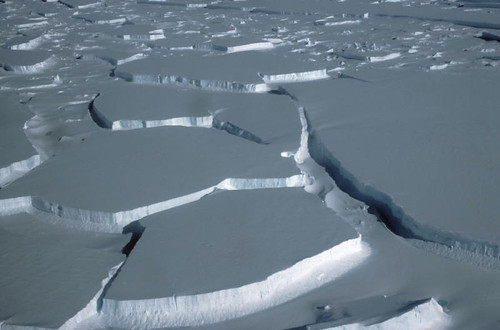ScienceDaily (Apr. 25, 2012) — An international team of scientists led by British Antarctic Survey (BAS) has established that warm ocean currents are the dominant cause of recent ice loss from Antarctica. New techniques have been used to differentiate, for the first time, between the two known causes of melting ice shelves -- warm ocean currents attacking the underside, and warm air melting from above. This finding brings scientists a step closer to providing reliable projections of future sea-level rise.
Researchers used 4.5 million measurements made by a laser instrument mounted on NASA's ICESat satellite to map the changing thickness of almost all the floating ice shelves around Antarctica, revealing the pattern of ice-shelf melt across the continent. Of the 54 ice shelves mapped, 20 are being melted by warm ocean currents, most of which are in West Antarctica.
In every case, the inland glaciers that flow down to the coast and feed into these thinning ice shelves have accelerated, draining more ice into the sea and contributing to sea level rise.
Lead author Dr Hamish Pritchard from British Antarctic Survey, which is funded by the UK's Natural Environment Research Council (NERC), said: "In most places in Antarctica, we can't explain the ice-shelf thinning through melting of snow at the surface, so it has to be driven by warm ocean currents melting them from below.
"We've looked all around the Antarctic coast and we see a clear pattern: in all the cases where ice shelves are being melted by the ocean, the inland glaciers are speeding up. It's this glacier acceleration that's responsible for most of the increase in ice loss from the continent and this is contributing to sea-level rise. More

